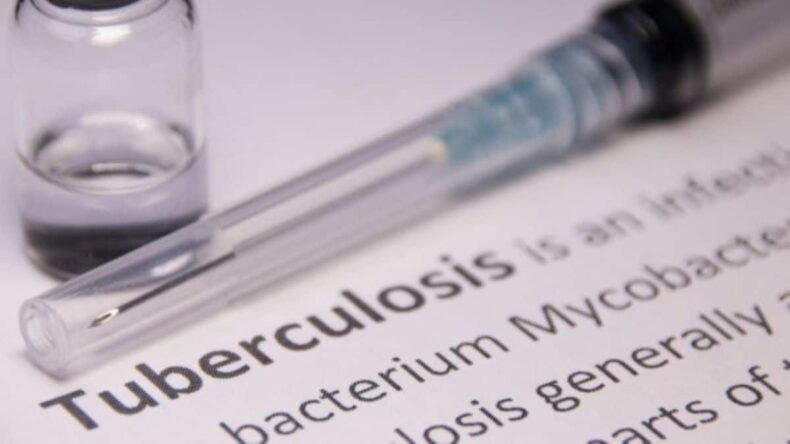India has become the first country in the world to develop a mathematical model Nikshay to detect TB cases. The new model can access annual incidence and mortality estimates quicker than WHO. Various measures are being discussed to implement the new model in all the states.

India has announced the launch of a country-level mathematical model called Nikshay that will estimate the prevalence of TB cases in the country, according to official sources on Tuesday. This new development has now enabled India to become the first country in the world to own such an infrastructure. Using this model, India will now be able to retrieve TB incidence and mortality estimates data by March every year; eight months before the annual WHO estimates, which are usually released in October, said the officials. The sources also added that India is looking forward to expanding this model to include estimates of all the states in the future.
Table of Contents
The new model Nikshay provides greater efficiency than WHO
The model drew praise from delegates from around 40 countries that participated in the 36th Stop TB Partnership Board meeting in Varanasi last week. They commended the new model and expressed their desire to implement it in their countries, according to sources.
In 2021, WHO estimates indicated that the TB incidence rate in India was 210. The Indian mathematical model reported an estimate of 196 in 2022. The absolute TB incidence number in 2021, according to WHO, was estimated to be 29.50 lakhs. On the other hand, the Indian model calculated the TB incidence number to be 27.70 lakhs in the following year.

WHO suggested that the TB mortality rate in 2021 was estimated to be 35, which was far more than the estimated value of 23 that was recorded by the Indian model in 2022. Similar differences can be seen in the WHO’s TB mortality rate as well, whose absolute number was estimated to be 4.94 lakh in 2021, while the estimate by the Indian model stood at 3.20 lakh in 2022, officials said.
According to official sources, India recorded a total of 21.5 lakh cases and 93,000 deaths on the Nikshay portal.
A total of 23,58,664 patients were diagnosed with drug-susceptible TB (DSTB) last year; 60.8 percent (14,33,922) of them were male, 39.1 percent (9,22,649) were female, and 5.7 percent (1,34,001) were early teenagers, according to the India TB Report 2024. Out of the total DSTB cases, 95.3 percent received treatment.
Improved treatment rate after the arrival of Nikshay
Around 85 percent of people diagnosed with DSTB cases in 2021 have had successful treatment; a mere 4.20 percent succumbed to death during treatment, while 2.60 percent were lost during the follow-up, 1.9 percent reported treatment failure, and 1.6 percent are yet to be evaluated (including those still in treatment).

The reports gave an overview of the successful treatment rates of patients from the public and private sectors, which were 85 percent and 87 percent, respectively.
TB surveillance efforts in India bloomed in 2022 as the country saw a staggering record-high notification of 24.20 lakh cases, which is an increase of over 13 percent as compared to 2021. This meant that India reported a case notification rate of about 172 cases per lakh population.
The treatment initiation rate was 95.5 percent among the notified cases in 2022. Delhi recorded the highest case notification rate among all the states with 546 cases per lakh population, while Kerala stood at the bottom with a case notification rate of 67 cases per lakh population.
India optimistic about their new innovation
Many factors led to the development of the new mathematical model, some of which are the natural history of the disease, treatment coverage, healthcare seeking, individual status of infection, missed or correct diagnosis, including cure, and death.
To increase the National TB Elimination Program’s coverage, various measures were taken in the last nine to ten years to generate evidence on missing cases. Officials said that high-quality rapid diagnostic tests such as the nucleic acid amplification test (NAAT) have replaced old laboratory services.

With the inclusion of the private sector and mandatory notification, the coverage of private sector notification has spiked seven times compared to 2014. Besides, the country has immensely benefited from the introduction of active case finding that ensured opportunities for early diagnosis, resulting in a reduction of the per capita transmission rate in the community.
Back in 2017, India introduced a daily regimen for first-line treatment of tuberculosis. The step was taken to harness universal access to TB care, which was achieved by blending the regimens in the public and private sectors.
The active tracking of patients in the Nikshay portal, supplemented with injection-free, shorter, and second-line treatment for drug-resistant TB patients, has resulted in better efficiency of treatment across the country.













